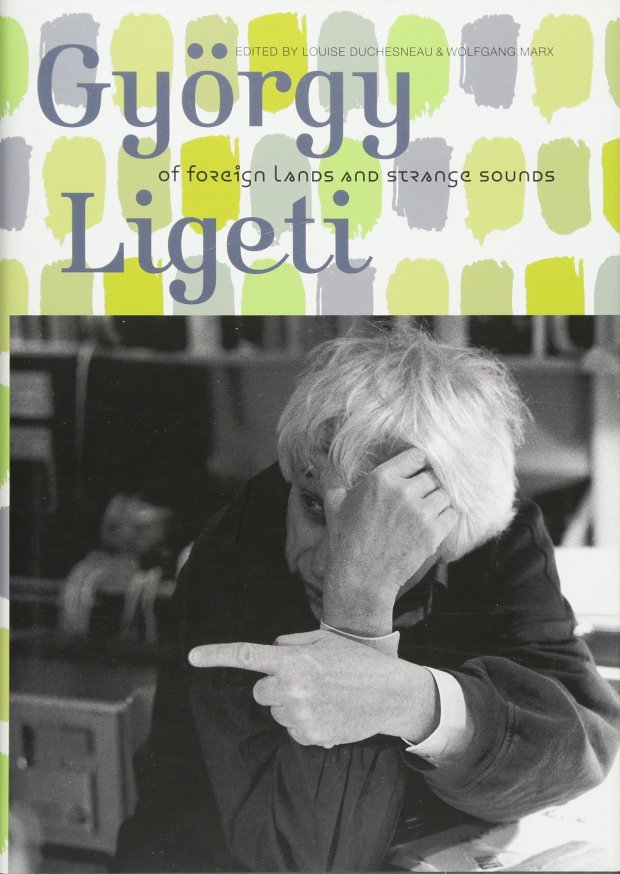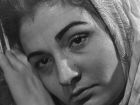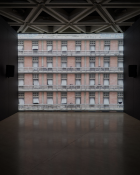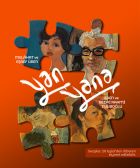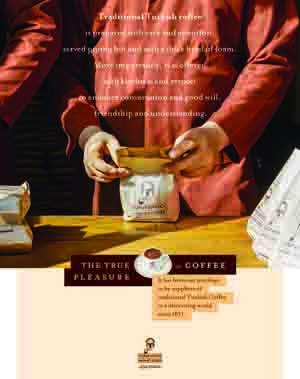On Sunday, March 21, a concert by players from the Borusan Istanbul Philharmonic Orchestra, originally recorded in January, was streamed online. Under the baton of Cem’i Can Deliorman, conductor of the Presidential Symphony Orchestra, they played works by Stravinsky, Schoenberg and Ligeti. For those who did not see my advance notice of the concert, here is the link once again (click on ‘borusansanat.tv’).
The first item on the programme, entitled 20. Yüzyılın İzinde (On the Trail of the Twentieth Century), was Igor Stravinsky’s Concerto in D Major for Strings (1946), sometimes called the ‘Basel Concerto’ as it was composed (in Hollywood) for the 20th anniversary of the Basel Chamber Orchestra. This was followed by trail-blazing modernist Arnold Schoenberg’s Chamber Symphony No 1, dating from 1906, and a much later piece by avant-garde icon György Ligeti. The first two pieces did not come off too well, and I have reservations about the choice of them. But the third more than made up for any deficiencies.
In a spirit of adolescent insubordination, I will start with the work that was played last, and that I enjoyed most – Ligeti’s Chamber Concerto No 1, written in the years 1969 and 1970. Wikipedia says the following:
The Chamber Concerto uses micropolyphonic textures, which Ligeti describes thus: ‘One clearly discernible interval combination is gradually blurred, and from this cloudiness it is possible to discern a new interval combination taking shape.’
In fact, this idea of ‘blurring’ forms an interesting parallel with the Stravinsky piece, which plays extensively with semitones (notably F sharp and F natural, the major and minor versions of the third note of the scale of D, thus blurring the distinction between major and minor scales), as well as with ninths and sevenths. One may guess that the path Ligeti was following was one that Stravinsky might have gone down if he had not been so taken up with Baroque forms (such as the concerto grosso) at the time he wrote his Concerto in D major. And it is interesting to note that the contrast between major and minor triads is one that has fascinated many modern composers, including Ligeti. But I digress.
György Ligeti (1923–2006) was a Hungarian avant-garde composer of Jewish extraction who had to endure many misfortunes during the course of his early life. He received his first musical instruction in Cluj; now known as Kaloşvar, the city is considered the ‘unofficial capital’ of Transylvania. (This region had been part of Hungary up to the end of the First World War, when the Treaty of Trianon awarded it to Romania, occasioning deep resentment in Hungary.) During the summer holidays he would go to Budapest to be coached by Pál Kadosa, himself a pupil of Zoltán Kodály and Zoltán Székely; Székely, a violinist and composer, was the dedicatee of Bartók’s second violin concerto. During the Holocaust, Ligeti was sent by Admiral Horthy’s regime to work in a forced labour brigade. His 16-year-old brother was deported to a concentration camp in Austria, and both his parents were sent to Auschwitz. By Ligeti’s own account, his brother, Gábor, was ‘murdered by a racist’, and he never saw his father again – but his mother, remarkably, survived. One can only imagine his feelings when she walked through the door in April 1945, after he had presumed her dead.
After the war Ligeti studied at the Franz Liszt Academy in Budapest, where his teachers included Pál Kadosa, Ferenc Farkas, Zoltán Kodály and Sándor Veress. Following in the footsteps of Bartók and Kodály, Ligeti conducted research into Hungarian folk music, spending a year in Transylvania before returning to Budapest to teach harmony, counterpoint and musical analysis at the Academy. Thus our composer was by no means lacking in formal education of the conventional kind – indeed, in the 1950s he wrote two textbooks on harmony. (I actually wrote ‘hormony’. What kind of a Freudian slip is that?)
In 1956, after the violent suppression of the Hungarian revolution, he fled to Vienna, eventually becoming an Austrian citizen. The Hungarian Composers’ Union – which was, naturally, Soviet-run – had in any case celebrated his talents by banning performance of his Cello Sonata, and censoring the last movement of his Six Bagatelles for Wind Quintet: they described it as ‘dangerous’. He had little reason to stay in a country where he was kept in complete ignorance of all developments in contemporary music, and could only listen in secret to radio broadcasts of concerts in the West – when they were not jammed, that is.
He soon left Vienna for Cologne, where he learned about state-of-the-art electronic music from people such as Karlheinz Stockhausen and Gottfried Michael Koenig, and met Pierre Boulez. Unlike his mentors, however, Ligeti preferred to write instrumental works containing electronic-sounding textures rather than resort to knob-twiddling (by which I mean that he composed little electronic music per se). In the end, after three years in Cologne, he left under a cloud, having realised that working within the constraints of ‘real time’ (rather than machine-produced) music actually suited him better. After ten years as guest professor of composition in Stockholm and a year as composer-in-residence at Stanford University in the USA, in 1973 he became professor of composition at the Hochschule für Musik und Theater in Hamburg, remaining there until his retirement in 1989.
Ligeti’s early works show the influence of Bartók, Stravinsky and (to some extent) Schoenberg. By the time of his departure to Vienna, however, he had embraced 12-tone music. In fact, during his rushed escape from Budapest he left most of his Hungarian compositions behind. He later said: ‘I considered my old music of no interest. I believed in 12-tone music.’ During the late 1950s and early 1960s he wrote two pieces – Apparitions and Atmosphères – in which the sounds resemble electronic textures, though produced by the usual instruments of the orchestra. Of Atmosphères, Wikipedia says the following:
It is noted for eschewing conventional melody and metre in favour of dense sound textures. After Apparitions, it was the second piece Ligeti wrote to exploit what he called a ‘micropolyphonic’ texture… Micropolyphony can be used to create nearly static but slowly evolving works… in which the individual instruments become hidden in a complex web of sound.
Note that word 'static'. The antithesis between stasis and movement was a key concept for him. (Another one, by the way, was fear of spiders – thus the reference to a ‘complex web of sound’, and the mention of cobwebs in the quotation below.) Ligeti himself described micropolyphony in the following words:
You hear a kind of impenetrable texture, something like a very densely woven cobweb. I have retained melodic lines in the process of composition; they are governed by rules as strict as Palestrina’s or those of the Flemish school, but the rules of this polyphony are worked out by me. The polyphonic structure does not come through – you cannot hear it; it remains hidden in a microscopic, underwater world, to us inaudible. I call it ‘micropolyphony’ (such a beautiful word!).
These two pieces made Ligeti famous: Atmosphères was used in Stanley Kubrick’s film 2001: A Space Odyssey. Here it is, played by the Berlin Philharmonic. The conductor is Sir Simon Rattle:
The String Quartet No 2 (1968) is sometimes described as a work of Ligeti’s ‘mature period’. Again, I will quote Wikipedia:
The five movements differ widely from each other in their types of motion. In the first, the structure is largely broken up… In the second, everything is reduced to very slow motion, and the music seems to be coming from a distance, with great lyricism. The pizzicato third movement is another of Ligeti’s machine-like studies, hard and mechanical, whereby the parts playing repeated notes create a ‘granulated’ continuum. In the fourth, which is fast and threatening, everything that happened before is crammed together. Lastly, in strong contrast, the fifth movement spreads itself out. In each movement, the same basic configurations return, but each time their colouring or viewpoint is different, so that the overall form only really emerges when one listens to all five movements in context.
The titles of the movements are a treat: I – Allegro nervoso (shudder!); II – Sostenuto, molto calmo; III – Come un meccanismo di precisione (Ligeti was fascinated by machines, especially malfunctioning ones); IV – Presto furioso, brutale, tumultuoso (brutale is no exaggeration); V – Allegro con delicatezza. Ligeti’s birth chart, by the way, reveals an exact Moon-Jupiter conjunction in intense Scorpio, a violent conjunction of Mars and Pluto, and a steamroller of a square between dictator Pluto and restrictive Saturn – the murder machine grinds inexorably on towards the victim tied to the train tracks. Lots of depth, conflict and suppressed anger. This performance of the String Quartet No 2 is by the LaSalle Quartet, for whom it was written:
Another Ligeti piece that was used in 2001: A Space Odyssey was his Lux Aeterna (1966), a good illustration of how his micropolyphony technique could be applied to vocal compositions. The Encyclopedia Britannica remarks that in some of his compositions of this period, he ‘attempts to obliterate the differences between vocal and instrumental sounds’. Whatever the intention may have been, I find the result – in places, at least – sublime. Kubrick was spot on in his choice. In his more relaxed moments, Ligeti allows his Venus in sensuous Taurus (her favourite and most harmonious placement) to shine through. And, of course, he had planets in all the sensitive water signs. Here is Lux Aeterna performed by Cappella Amsterdam, conducted by their artistic director Daniel Reuss, with the score:
From beatitude to the darkly bizarre: the ‘anti-anti opera’ Le Grand Macabre, written in the 1970s and revised in 1996, is a masterpiece of mayhem, a kind of musical Mad Max. I warn you that this one is a real doozy – a dose of dada that is potentially destructive to the mental equilibrium. You might do better than to refrain from listening after a hard day in the virtual inferno, or in any other state of knife-edge neurosis. The following performance in Barcelona, sung in English, is a co-production by Gran Teatre del Liceu, Théâtre Royal de la Monnaie, Opera di Roma and the English National Opera. The notes under the YouTube version give you the necessary background:
This amazing performance of Mysteries of the Macabre (1992) – a brief selection from Le Grand Macabre – by soprano Alicia Arno and the Orquesta Sinfónica de Burgos, conducted by Javier Castro Villamor, is not, repeat not, inspired by Desperate Housewives:
I was pleased to discover an excellent ‘portrait film documentary’ about György Ligeti in which he speaks French. (The English subtitles harbour a few mistranslations: someone obviously thinks paysages – ‘landscapes’ – means ‘passages’.) Don’t miss the weird costumes in the snatches of Le Grand Macabre that occur at 21:33 and 22:27. And the extract from Nonsense Madrigals (1988-93) that begins at 56:23 is a hoot:
And so to Ligeti’s Chamber Concerto No. 1, the last work performed by the Borusan Istanbul Philharmonic in their concert. There are four movements: Corrente; Calmo, sostenuto; Movimento preciso e meccanico (another wonderful title – he once wrote a piece for 100 clicking metronomes); and Presto. It is scored for a sparse selection of wind and brass instruments, plus piano (doubling celesta), harpsichord (doubling harmonium or Hammond organ) and string quintet. Here is a description of the work by Robert Kirzinger on the ‘AllMusic’ website.
For those wishing to delve deeper, Mr Samuel Andreyev has done us a much-appreciated favour by supplying a detailed analysis – that is, however, more than a little technical – of the first movement. If you wish to omit his opening remarks, scroll on to 03:57. And by the way, when he uses the term ‘serialism’, he is referring to 12-tone music (ie, music that uses tone rows in the manner invented by Schoenberg):
As well as being musically satisfying, the performance by the Borusan orchestra was visually pleasing; I especially enjoyed the pianist’s exertions, though I am sure the piano must have needed re-tuning afterwards. The camerawork and sound recording were excellent throughout, adding to the quality of the experience. In the first movement the clusters of notes from the woodwinds, strings and horn came over well, and the second movement was nice and spooky. It was in the third movement, in which the violinists strum their instruments like banjos, that I began to appreciate the similarity of the sounds made by the orchestra to bird-calls, and by the fourth I was imagining flocks of toucans flying by, honking manically. This work was definitely a good choice for a programme that set out to give a retrospective on 20th-century music.
The time has now come when I must, with regret, express the opinion that the first two works on the programme – the Stravinsky and the Schoenberg – were not played all that well. Part of the reason may have been the social distancing: the musicians were perhaps sitting too far from each other to be able to recreate their usual group dynamic. (I am not, by the way, criticising the observance of social distancing – just making the observation that it had an unavoidable effect on the performance.) The rhythm in Stravinsky’s Concerto in D Major for Strings was uninspiring – a killer in a piece that relies so heavily on rhythm – and the ensemble playing, especially the pizzicatos, was ragged. To be fair, though, this is by no means an easy work to perform. Schoenberg’s Chamber Symphony No 1 in E Major suffered from intonation problems, especially at the beginning. Also, while I enjoyed the expertly-played violin and cello solos that begin at 27:20 and precede a build-up to a romantic peak at 29:50, I personally would not have selected this as a ‘key work’ of 20th-century music.
Frankly, although Schoenberg is unquestionably an important figure from the historical point of view, this particular piece is not of the top-notch variety. It keeps working up towards a climax, but the catharsis never comes: the balloon is blown up, and the air let out again, so many times that after the eighth or so repetition of this cycle one abandons any hope of closure. In this it is rather like Scriabin’s Poem of Ecstasy, in which the aeroplane keeps taxiing along the tarmac, producing occasional spurts of speed that create a sense of anticipation, but takeoff is never quite achieved. (If the plane had actually taken to the air at any point, of course, the composer would have had to finish the piece there and then – but this, it seems, he had no intention of doing.) Other niggles with the Schoenberg are that the orchestration is too dense, producing a muddy effect in the middle and lower registers – and by the way, did he really need that double bassoon? Also, there is too much tutti: the piece would have benefited from a thinning of the texture from time to time.
Having unburdened myself of these unworthy criticisms, I will now present some thoughts on the Stravinsky in the Irish conductor Lygia O’Riordan’s admirably succinct summary on the Ensemble XXI website. A more detailed analysis is supplied by James Leonard on ‘AllMusic’.
An article by virtuoso pianist Mitsuko Uchida has some interesting biographical details: it seems the Stravinskys and the Schoenbergs were neighbours in Hollywood in the 1940s, but the frostiness between them never thawed: ‘Musicians came from all over the world to visit them,’ Robert Craft wrote, ‘not mentioning to one composer their meetings with the other one.’
There are many parallels with Ligeti here, not the least of which is the fact that ‘In 1951, Stravinsky’s score was choreographed by Jerome Robbins as The Cage, a horror story about murderous insects…’ The article also mentions the ‘blurring of tonal boundaries’ in the piece’s itinerary.
As a complementary performance to that of the Borusan Istanbul Philharmonic, here is Stravinsky’s Concerto in D Major for Strings played by the Stockholm Chamber Orchestra, conducted by Esa-Pekka Salonen (whom I greatly admire, especially for his renditions of Sibelius and Schnittke):
Arnold Schoenberg’s Chamber Symphony No 1 in E Major received its first hearing in Vienna in 1907. This was followed by a performance in 1913, again in Vienna, as part of the ill-famed ‘Skandalkonzert’ that provoked a riot on the part of the audience. Wikipedia has the following description of the event:
During the concert, the audience, shocked by the expressionism and experimentalism of the music, began rioting, and the concert ended prematurely. Amid the unrest, concert organiser Erhard Buschbeck was said to have slapped a concertgoer in the face; this would eventually lead to a lawsuit against Buschbeck. The event also led to an alternate name for the ‘Skandalkonzert’: ‘Watschenkonzert’, from the Austrian German for ‘slap concert’. Operetta composer Oscar Straus, a witness to the alleged assault, testified that the slap had been the most harmonious sound of the evening.
That last comment was perhaps a trifle over the top. If the music becomes intolerable, one can simply walk out, as I once saw someone do during a recital at the Royal Manchester College of Music in 1968. The pianist Roger Smalley was playing a piece by the Australian composer David Lumsdaine that is described in Lumsdaine’s Wikipedia entry as ‘his masterly piano work’. I myself found it excruciating, but stuck it out to the end. I have never walked out of a concert, and hope I never will. At the recital I have just referred to, Mr Smalley had the good grace to cast a smile in the direction of the departing figure.
Of Schoenberg’s Chamber Symphony No 1, James Leonard, on the AllMusic website, says: 'the work itself remains a brilliant and often beautiful example of a unique style.’ I fear I must respectfully disagree. Mr Leonard does, however, admit that ‘The writing is extremely difficult, with every player a virtuoso.’ He also gives voice to the following rather revealing comment:
The style of the chamber symphony is direct to the point of bluntness and energetic past the point of frantic. It is easy to understand why Schoenberg abandoned it: the style was difficult to sustain and impossible to duplicate.
I cannot restrain a wry smile at that last sentence.
In the following video, Sinfonieorchester des Südwestfunks (the Southwest German Radio Orchestra) rehearses the piece with expert conductor Erich Leinsdorf (1912–93) in fact, there are two rehearsals, followed by a concert. The excellent playing and sound quality are almost sufficient to reconcile me to the work:
I applaud the Borusan Istanbul Philharmonic Orchestra, its guest conductor Cem’i Can Deliorman and its programme-makers firstly, for giving us something to sustain us in a time of famine, and secondly for putting 20th-century music on the menu. Perhaps next time they might entertain us with works that are less fearsomely difficult to play than the pieces by Stravinsky and Schoenberg that were actually chosen. But I must compliment them both on the decision to play Ligeti’s Chamber Concerto No 1 and on the performance itself. It was the most enjoyable thing I have heard for a long time. Future concerts by Borusan, in whatever circumstances, are very much anticipated.

